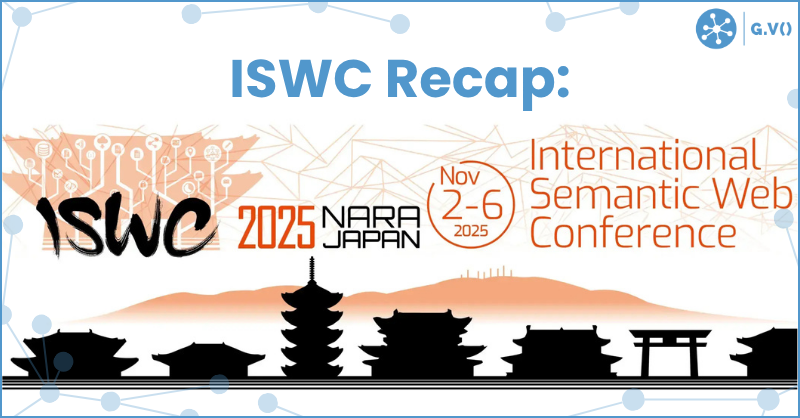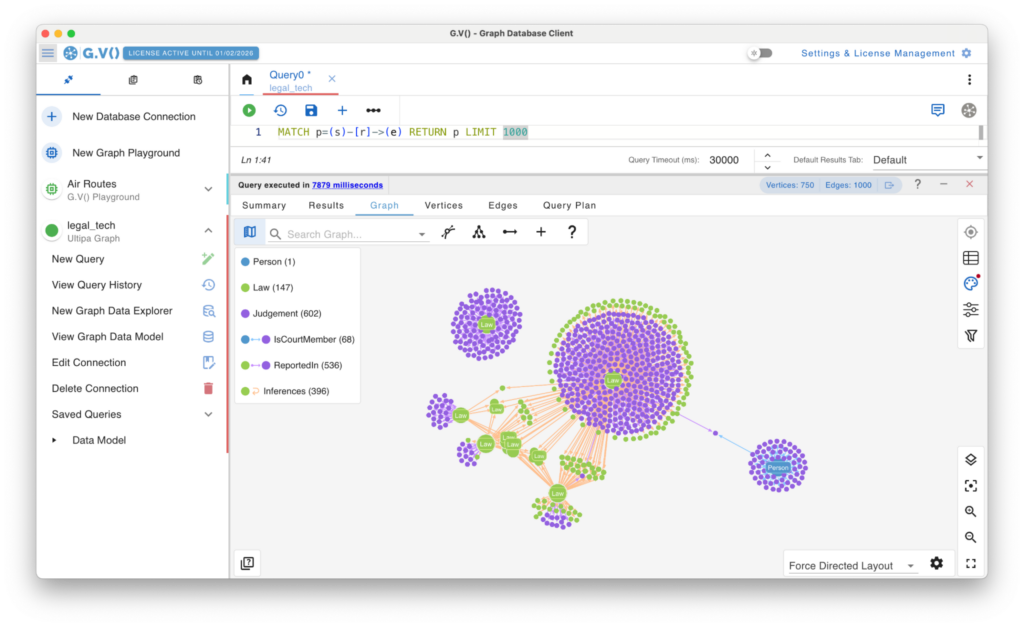![The Weekly Edge: Baroque Org Charts, AI & Graph Visualization, Graph DB Demos & More [28 November 2025] The Weekly Edge: Baroque Org Charts, AI & Graph Visualization, Graph DB Demos & More [28 November 2025]](https://gdotv.com/wp-content/uploads/2025/11/weekly-edge-graph-visualization-28-november.png)
The Weekly Edge: Baroque Org Charts, AI & Graph Visualization, Graph DB Demos & More [28 November 2025]
Discover what’s new this week in graph technology: First Brands bankruptcy visualization reveals fraud’s architecture, IEEE VIS papers explore how AI perceives network diagrams, plus documentation graphs, FalkorDB’s Text2SQL & Text2Cypher, and Neo4j’s StrangerGraphs fan theory analysis.
![The Weekly Edge: Release of the Gremlins, Spotlight on Embeddable Graph Databases, & More [21 November 2025] The Weekly Edge: Release of the Gremlins, Spotlight on Embeddable Graph Databases, & More [21 November 2025]](https://gdotv.com/wp-content/uploads/2025/11/tinkerpop-release-graphlite-news-puppygraph-onelake-weekly-edge-20-november-2025.png)
The Weekly Edge: Release of the Gremlins, Spotlight on Embeddable Graph Databases, & More [21 November 2025]
Discover what’s new this week in graph technology, including a new (embeddable) graph database, a double TinkerPop release, big PuppyGraph news and more.

ISWC Recap: Trends & Reflections from the International Semantic Web Conference 2025
Catch up on everything that happened at ISWC this year, including awards, papers, trends, and reflections on what this year’s conference means for the future.
![The Weekly Edge: RDF Edition! [14 November 2025] The Weekly Edge: RDF Edition! [14 November 2025]](https://gdotv.com/wp-content/uploads/2025/11/rdf-triplestore-sparql-weekly-edge-14-november-2025.png)
The Weekly Edge: RDF Edition! [14 November 2025]
Discover what’s new in the world of RDF triplestores this week, including beginner tutorials, ISWC coverage, and how RDF powers the Netflix knowledge graph.
![RDF Support Is Now Available in G.V() [v3.41.99 Release Notes] RDF Support Is Now Available in G.V() [v3.41.99 Release Notes]](https://gdotv.com/wp-content/uploads/2025/11/rdf-triplestore-sparql-support-gdotv-graph-database-IDE-1024x535.png)
RDF Support Is Now Available in G.V() [v3.41.99 Release Notes]
Learn more about how the latest release of G.V() now supports RDF triplestores and the SPARQL query language with autocomplete, visualization, and more.
![The Weekly Edge: New Gremlin Contributor, 2 Graph Releases, Ontologies in Aura, & More [7 November 2025] The Weekly Edge: New Gremlin Contributor, 2 Graph Releases, Ontologies in Aura, & More [7 November 2025]](https://gdotv.com/wp-content/uploads/2025/11/youtrackdb-ladybug-arcadedb-neo4j-aura-weekly-edge-7-november-2025.png)
The Weekly Edge: New Gremlin Contributor, 2 Graph Releases, Ontologies in Aura, & More [7 November 2025]
Discover what’s new in the world of graph technology this week, including a new Gremlin graph database, 2 other major releases, and cybersecurity primer.
![The Weekly Edge: Dgraph Lives, RyuGraph Rises, Gephi Lite & More [31 October 2025] The Weekly Edge: Dgraph Lives, RyuGraph Rises, Gephi Lite & More [31 October 2025]](https://gdotv.com/wp-content/uploads/2025/10/ryugraph-dgraph-gephi-weekly-edge-31-october-2025.png)
The Weekly Edge: Dgraph Lives, RyuGraph Rises, Gephi Lite & More [31 October 2025]
Discover what’s new in the world of graph technology this week, including a Dgraph acquisition, a new fork of Kuzu, the release of Gephi Lite, and more.
![The Weekly Edge: Kuzu Forks, DuckDB Goes Graph, Cypher 25 & More [24 October 2025] The Weekly Edge: Kuzu Forks, DuckDB Goes Graph, Cypher 25 & More [24 October 2025]](https://gdotv.com/wp-content/uploads/2025/10/ladybug-graph-database-duckdb-cypher-weekly-edge-24-october-2025.png)
The Weekly Edge: Kuzu Forks, DuckDB Goes Graph, Cypher 25 & More [24 October 2025]
Discover what’s new in the world of graph tech this week, including what’s next for Kuzu, a new book on knowledge graphs and LLMs, Cypher upgrades and more.
![The Weekly Edge: Adieu Kuzu, State of the Graph, NetworkX on Neptune Analytics, & More [17 October 2025] The Weekly Edge: Adieu Kuzu, State of the Graph, NetworkX on Neptune Analytics, & More [17 October 2025]](https://gdotv.com/wp-content/uploads/2025/10/kuzu-archived-networkx-neptune-analytics-weekly-edge-17-october-2025.png)
The Weekly Edge: Adieu Kuzu, State of the Graph, NetworkX on Neptune Analytics, & More [17 October 2025]
Discover what’s new in the world of graph technology this week, including the archiving of Kuzu DB, the State of the Graph project, a new graph agent, and more.
![The Weekly Edge: Graph Tech in Flux, Flexible GraphRAG, KGs for Synthetic Data & More [10 October 2025] The Weekly Edge: Graph Tech in Flux, Flexible GraphRAG, KGs for Synthetic Data & More [10 October 2025]](https://gdotv.com/wp-content/uploads/2025/10/graph-data-council-graph-enhance-AI-memory-weekly-edge-10-october-2025.png)
The Weekly Edge: Graph Tech in Flux, Flexible GraphRAG, KGs for Synthetic Data & More [10 October 2025]
Discover what’s new in the world of graph technology this week, including new videos and reads from the Graph Data Council, IEEE, Microsoft Fabric, and more.
![The Weekly Edge: Microsoft Sentinel Graph, Columnar Graph Databases, Euler & More [3 October 2025] The Weekly Edge: Microsoft Sentinel Graph, Columnar Graph Databases, Euler & More [3 October 2025]](https://gdotv.com/wp-content/uploads/2024/10/microsoft-sentinel-graph-column-oriented-graph-database-euler-weekly-edge-3-october-2025.png)
The Weekly Edge: Microsoft Sentinel Graph, Columnar Graph Databases, Euler & More [3 October 2025]
Discover what’s new in the world of graph technology this week, including Microsoft’s new graph tool for cybersecurity, a knowledge graph hot take, and more.

G.V() 3.40.94 Release Notes: Ultipa Graph support, Embedded Cypher Documentation
Today marks the release of G.V() 3.40.94. Some significant additions this time around – we now support ISO GQL (Graph Query Language), starting with Ultipa Graph Database!
We’ve also extended our embedded documentation feature, previously only available for the Gremlin query language, to work with Cypher and its many database-specific variants.
And finally, we’ve introduced further user experience improvements, most notably to the settings menu.